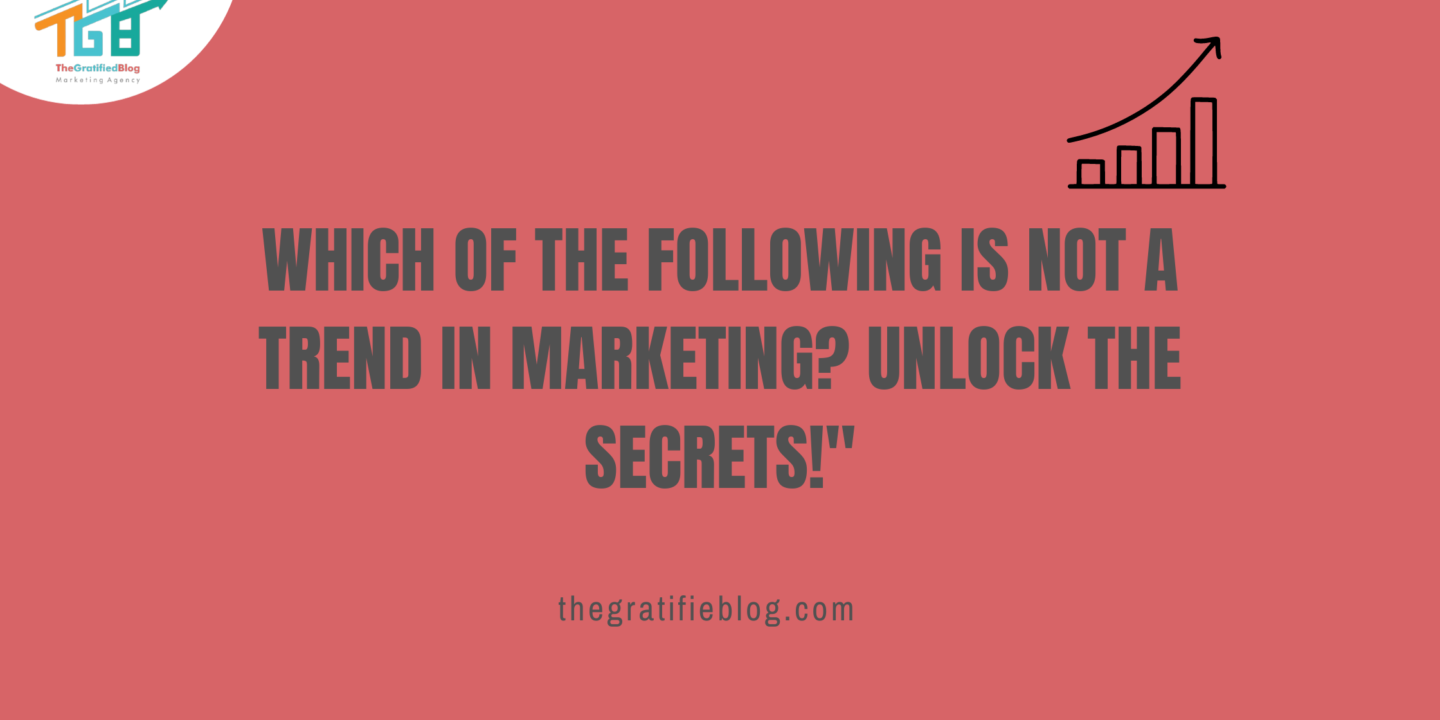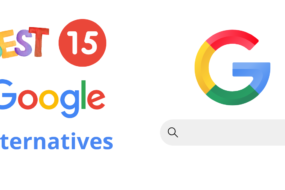
In the fast-paced marketing arena, where strategies evolve at the speed of consumer preferences and technological advancements, discerning the pulse of current trends is paramount for businesses seeking sustained success. So, let’s unravel the intricacies of marketing dynamics with a focused lens on the question that beckons our exploration: “Which of the following is not considered a trend in marketing?” This inquiry opens the gateway to a comprehensive examination of the ever-evolving landscape, probing into the essence of trends that drive consumer engagement, technological innovation, and the strategic maneuvers that set the pace for businesses worldwide.
In this blog expedition, we delve into the question of “Which Of The Following Is Not Considered A Trend In Marketing,” explore the reasons behind the exclusion of industrial marketing from the realm of marketing trends, investigate the factors contributing to the emergence of other marketing techniques as prevalent trends, address frequently asked questions to provide a comprehensive understanding and culminate our journey with a thoughtful conclusion.
Together, we’ll navigate the currents of the marketing landscape, seeking to understand not only what sets a particular category apart but also why specific strategies emerge as the driving forces shaping the trajectory of contemporary marketing.
So, let’s get started by answering the question
Which Of The Following Is Not Considered A Trend In Marketing?
- Relationship marketing
- Distributive marketing
- Industrial Marketing
- Mobile Marketing
Answer: Industrial Marketing
Now, let’s delve into why industrial marketing doesn’t fit the mold of a marketing trend.
Why Industrial Marketing Is Not Considered As A Trend In Marketing
While undeniably crucial in the business-to-business (B2B) landscape, industrial marketing is not typically considered a marketing trend due to its focus on the transaction interchange of goods and services between two entities rather than directly engaging with end consumers.
Let’s delve into the intricacies of industrial marketing and explore why it doesn’t align with the characteristics typically associated with contemporary marketing trends:
- B2B Focus: Industrial marketing primarily caters to B2B transactions, wherein businesses vend their products or services to other companies. This approach involves different strategies than consumer-centric trends that often involve understanding and engaging directly with the end-user.
- Relationships within Industries: While relationship-building is integral to industrial marketing, it emphasizes relationships within industries rather than cultivating direct connections with end consumers. Contemporary marketing trends often center around building and nurturing relationships with individual consumers, focusing on personalization and consumer experiences.
- Consumer-Centric Trends: Current marketing trends often gravitate towards consumer-centric approaches, where businesses prioritize understanding and meeting individual consumers’ evolving needs and preferences. Industrial marketing may not be as directly aligned with these consumer-centric trends.
- Technology and Innovation: Marketing trends frequently incorporate emerging technologies and innovative strategies to enhance the consumer experience. While certainly adopting technology for efficiency, industrial marketing may not be at the forefront of leveraging cutting-edge technologies for consumer engagement, as its primary focus is facilitating business transactions.
- Brand Visibility and Recognition: Many marketing trends emphasize building brand visibility and recognition directly among end consumers. While building a brand reputation within specific industries, industrial marketing may only sometimes prioritize creating a recognizable brand among a broader consumer audience.
- Adaptability to Consumer Behavior: Marketing trends often involve a keen understanding of and adaptation to rapidly changing consumer behavior. Industrial marketing strategies, while adaptive, are more tailored to the specific needs and cycles of B2B transactions, making them less dynamic in response to individual consumer behavior shifts.
- Dynamic Changes in the Digital Sphere: The digital landscape constantly evolves, driving many modern marketing trends. Approaches like marketing on social media, influencer collaborations, and personalized online experiences are geared toward reaching and engaging individual consumers directly. While incorporating digital elements, industrial marketing may still need to leverage these strategies fully at the forefront of its approach.
Now that we’ve explored why industrial marketing doesn’t quite fit the mold of a trend in marketing let’s pivot our focus to the vibrant landscape of marketing trends actively shaping the industry.
Why Do Other Marketing Techniques Emerge As Market Trends?
Relationship Marketing
- Customer-Centric Approach: In relationship marketing, the spotlight is cultivating enduring customer bonds. This approach is a response to the contemporary consumer desire for personalized experiences. Businesses are steering away from transactional interactions, opting for relational approaches, and prioritizing establishing long-term connections. The aim is to nurture customer loyalty and satisfaction by tailoring experiences to individual preferences, acknowledging each customer’s importance in the brand’s overall narrative.
- Brand Advocacy: A cornerstone of relationship marketing is transforming satisfied customers into enthusiastic brand advocates. Recognizing the influential power of positive word-of-mouth, reviews, and recommendations, relationship marketing strategically leverages these organic channels. Doing so enhances the brand’s visibility and taps into existing customers’ authentic and trusted recommendations. This form of advocacy becomes a potent tool for attracting new customers, creating a ripple effect of positive sentiment beyond traditional marketing efforts.
- Emphasis on Retention: While acquiring new customers is undeniably essential, relationship marketing places equal, if not greater, importance on retaining existing ones. This involves continuously and proactively engaging with customers, ensuring their evolving needs are understood and met. Establishing a loyal customer base is achievable for businesses by focusing on customer retention and fostering a sense of connection beyond the initial transaction. This emphasis on retention not only contributes to sustained revenue but also fortifies the brand-customer relationship for the long haul.
Distributive Marketing
- Globalization and E-Commerce: As e-commerce gains prominence and markets continue to globalize, the strategic management of distribution channels becomes a pivotal trend in the marketing landscape. Distributive marketing responds to this shift by optimizing supply chains and streamlining distribution processes. The goal is to ensure that products navigate the complexities of global markets efficiently, reaching consumers in a timely and cost-effective manner. This trend reflects a dynamic distribution approach, acknowledging modern commerce’s borderless nature.
- Convenience for Consumers: In the contemporary, fast-paced world, consumer preferences lean heavily towards convenience. Distributive marketing recognizes and responds to this demand by prioritizing strategies that make products easily accessible. Whether through the seamless experience of online platforms or the tangible presence in brick-and-mortar stores, distributive marketing trends aim to meet consumers where they are. The emphasis is on providing a variety of accessible channels, creating a synergy between online and offline avenues to cater to consumers’ diverse preferences and lifestyles. That ensures that products are not only available but also conveniently so, aligning with the expectations of today’s dynamic consumer base.
Mobile Marketing
- The ubiquity of Smartphones: The omnipresence of smartphones has propelled mobile marketing into an indispensable trend. Businesses recognize the need to leverage this platform as a significant portion of the population engages with information, shopping, and social interactions through mobile devices. Mobile marketing has become a strategic imperative, allowing businesses to reach consumers wherever they are, acknowledging smartphones’ pivotal role in shaping modern consumer behavior.
- Personalized and Location-Based Marketing: Mobile devices catalyze highly targeted and personalized marketing efforts. Mobile marketing enables businesses to tailor messages based on individual preferences and locations. This customized approach extends to location-based promotions and personalized app experiences, creating a more intimate connection between companies and consumers. By harnessing the power of personalization and location, mobile marketing enhances the overall consumer experience, making interactions more relevant and engaging.
- App Integration and Mobile-Friendly Content: Businesses integrate their marketing strategies seamlessly with these platforms, recognizing the growing reliance on mobile apps. That includes creating mobile-friendly websites and delivering content optimized for smaller screens. The integration with mobile applications ensures a cohesive and user-friendly experience, aligning with the preferences of a mobile-centric audience. Mobile marketing goes beyond mere smartphone presence; it creates an immersive and engaging user environment, contributing to a seamless and enjoyable interaction with the brand.
FAQs
Q1. Why is industrial marketing not seen as a trend in the marketing landscape?
A. Industrial marketing, focusing on B2B transactions and industry relationships, needs more consumer-centric and dynamic characteristics of contemporary marketing trends.
Q2. What are some examples of consumer-centric trends in marketing?
A. Relationship marketing, distributive marketing, and mobile marketing are prominent examples emphasizing personalized experiences, optimized distribution channels, and leveraging mobile platforms.
Q3. How does relationship marketing contribute to the trends in the industry?
A. Relationship marketing stands out by prioritizing long-term connections with customers, fostering brand advocacy, and strongly emphasizing customer retention.
Conclusion
Now that you’ve identified Which of the following is not considered a trend in marketing? Redirect your time and resources toward strategies that yield impactful results. Invest in proven marketing trends to witness a transformative impact on your business growth. Refrain from spending valuable assets on outdated techniques; instead, channel your efforts into avenues that resonate with the dynamic landscape and drive meaningful outcomes for your business.
If you still have any questions related to the blog, then feel free to leave them in the comment section. We will be happy to answer you.
Thanks for reading 🙂








No Comments